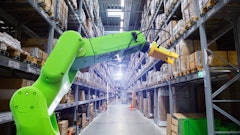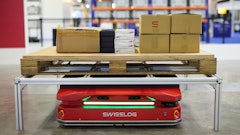Logistics clusters. What are they? How do they operate? And do they serve a better purpose for the supply chain than a transportation hub, per say?
Regardless of the winning argument, a “cluster” is not the newest of concepts. In the raw sense, it can be defined as an area of economic market opportunity where business is increasingly expanding in a variety of industry segments—from finance to manufacturing to distribution.
Take, for example, recent industrial development in Abu Dhabi. One such “cluster project” venture known as “Kizad” could attract companies from a number of sectors to grow their business in the region.
“Logistics clusters,” on the other hand, provide a more specific avenue for growth in logistics services and targeted opportunities for third-party logistics (3PL) providers. Yet, according to Yossi Sheffi, Professor of Engineering Systems at the Massachusetts Institute of Technology (MIT) and Director of the MIT Center for Transportation and Logistics, “logistics clusters” go beyond just the scope of logistics.
Defined as “geographically-concentrated sets of logistics-related companies, distributors and the logistics functions of retailers and manufacturers,” logistics clusters serve a multitude of manufacturers, retailers and distributors and are not dependent on any one industry. Therefore, they can help ease unemployment pressures by creating and sustaining jobs.
So why are they important now? Increasing global expansion of such logistics clusters is one such important factor to take note of.
Located in the Dallas/Fort Worth Metroplex, Alliance Global Logistics Hub is one such logistics cluster which offers numerous multi-modal transportation services in addition to other supply chain services such as air cargo ground handling; aviation services; and Foreign-Trade Zone (FTZ) services.
“Zappos has a distribution center that is part of the Louisville cluster,” confirmed Sheffi. “China has logistics clusters and logistics nodes like there is no tomorrow. Columbia continues to invest in Cartagena to build a huge port complex that they can use to distribute goods from throughout Latin America. Lots of countries are investing in logistics clusters. And in many cases, it is with an eye towards creating and building a whole range of jobs—and not just blue collar jobs.”
Job market opportunities
In fact, the Port of Cartagena continues to focus on the needs of the workforce, preparing and training employees on its further expansion developments.
“The heart of the unemployment problem is among people who have limited education—those with only high school or community college education,” Sheffi continued. “Logistics not only solves this problem but turns out, it’s one industry that promotes from within. So, employees in customer service and even information technology executives—most of them grow from within the industry.”
“The poster child for this is of course UPS where most of its top level executives started by either driving trucks or moving boxes in their distribution center,” said Sheffi. “That is the first level of job creation in the logistics industry itself. And it turns out that these logistics clusters are also concentrations of value-added activities. Examples include preparing the packages or the shipments for retail display, i.e., lots of activities that have to do more with the package itself; or returns & repair services. So in many cases, you have activities done that are not straight logistics activities,” Sheffi explained.
Adding to the multi-level job creation are the numerous transportation and infrastructure projects to be expedited under President Barack Obama’s “We Can’t Wait” initiative. Such projects—most recently announced, the transit projects in Minneapolis and Cleveland—may very well fall under the “transportation hub” category more so than under the “logistics clusters” label. Yet, in any event, such projects can not only promote diverse job growth but also spread shared best practices, also known as “tactic knowledge exchange.”
“There are certain benefits of even having your competitor next door—this is true of any cluster,” explained Sheffi. “Why is most of the entertainment industry in Hollywood? Why is most of the financial services industry on Wall Street? Why is most of the information technology industry in Silicon Valley?” he questioned.
“You have lots of benefits in having ‘like’ companies in the same area. You get more ‘sway’ with local government to make investments that benefit that particular cluster—whether it’s a bid for road improvements or regulatory zoning changes. For logistics in particular, the benefits are even stronger in having lots of activity in close proximity to each other. Transportation carriers can provide a higher frequency of direct services to more locations—so the services are better. Other institutions may move into the area and develop a two-year certificate for operating all kinds of logistics equipment (at the lowest level of employment),” said Sheffi.
Yet, the surrounding population around such areas of development may think otherwise. While residents around such areas of economic growth may not want such big “logistics clusters” in their backyard, to others, their overall benefits—including proactive environmental strategies—may far outweigh such cries of the local population. For ex., the Port Authority of Cartagena, contains five waste collection points—specific for hazardous wastes—located in Cartagena Basin. In addition, logistics clusters also create manufacturing job opportunities—such jobs that continue to be reshored back to the U.S. and which may call for “greener” supply chain processes within manufacturing.
“Logistics clusters are becoming hubs of environmental innovation,” said Sheffi. Another such example is in the case of PortTech Los Angeles( PortTechLA), a commercialization center and incubation program which funds innovation and environmental sustainability around the ports, according to Sheffi.
PortTechLA maintains regulatory etiquette, for example, a truck that is more than five years old cannot enter a port,” Sheffi continued. “They also funded the development of all kind of alternative fuel trucks, alternative fuel cranes and all kinds of different oils and diesels in order to reduce the carbon footprint but also reduce cost and noise. And such places continue to invest a lot in environmental innovation,” he concluded.
Future developments
Whether we continue to see some of the high-end logistics providers and 3PL’s moving into such “logistics clusters” in 2013 is to be determined. But as demand for more logistics services across such sectors as automotive, retail and high tech continues to increase—as customers look for better performance and supply in such services—logistics clusters will continue to add market value through industrial activity generation.
For more information on logistics clusters, visit http://bit.ly/13i1iIg.



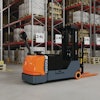


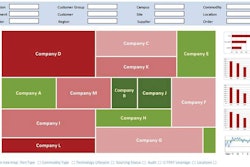




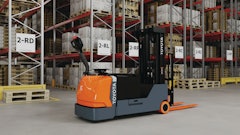
![Ryder Jeff Peterson[28]](https://img.sdcexec.com/mindful/acbm/workspaces/default/uploads/2025/08/ryder-jeff-peterson28.OZgARWeh17.jpg?ar=16%3A9&auto=format%2Ccompress&facepad=3&fit=crop&h=135&q=70&w=240)
![Ryder Dave Yoder (2)[63]](https://img.sdcexec.com/mindful/acbm/workspaces/default/uploads/2025/08/ryder-dave-yoder-263.BIOjoyhtSU.jpg?ar=16%3A9&auto=format%2Ccompress&facepad=3&fit=crop&h=135&q=70&w=240)

